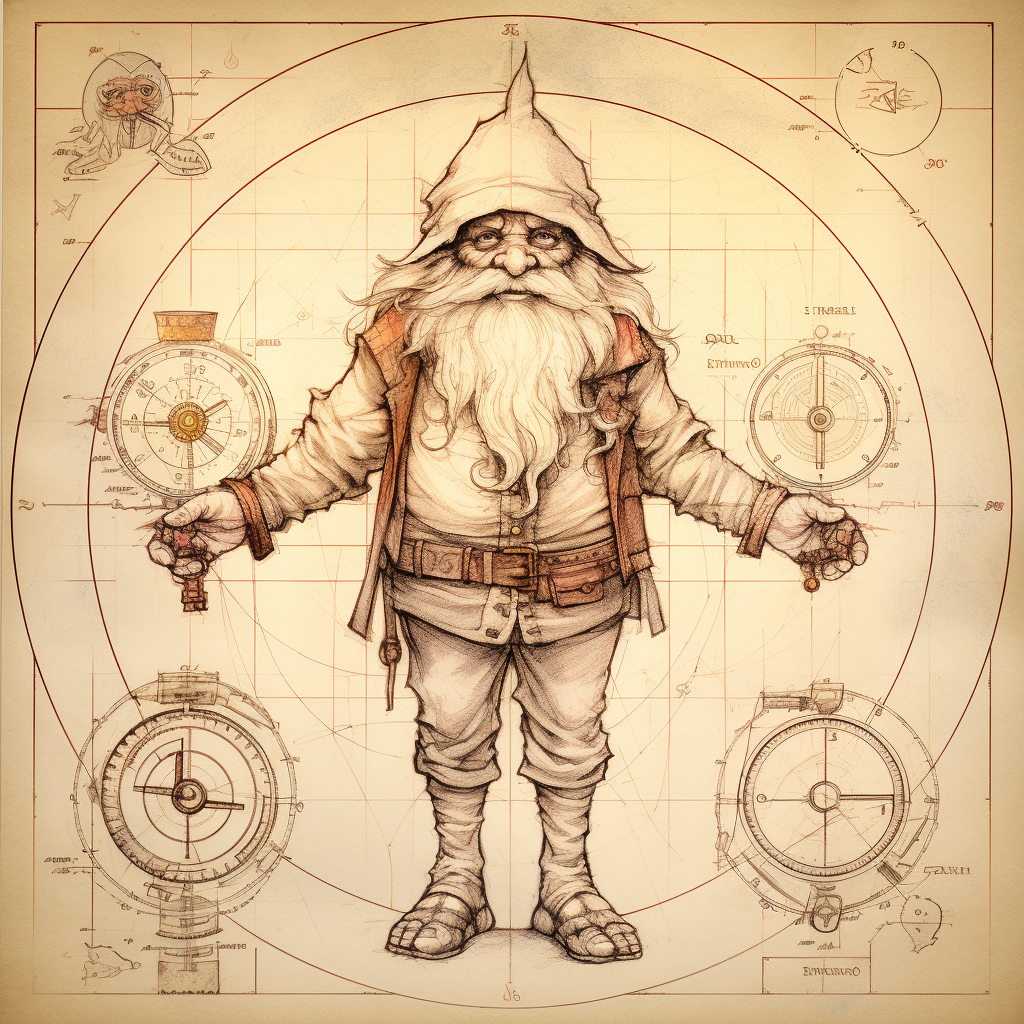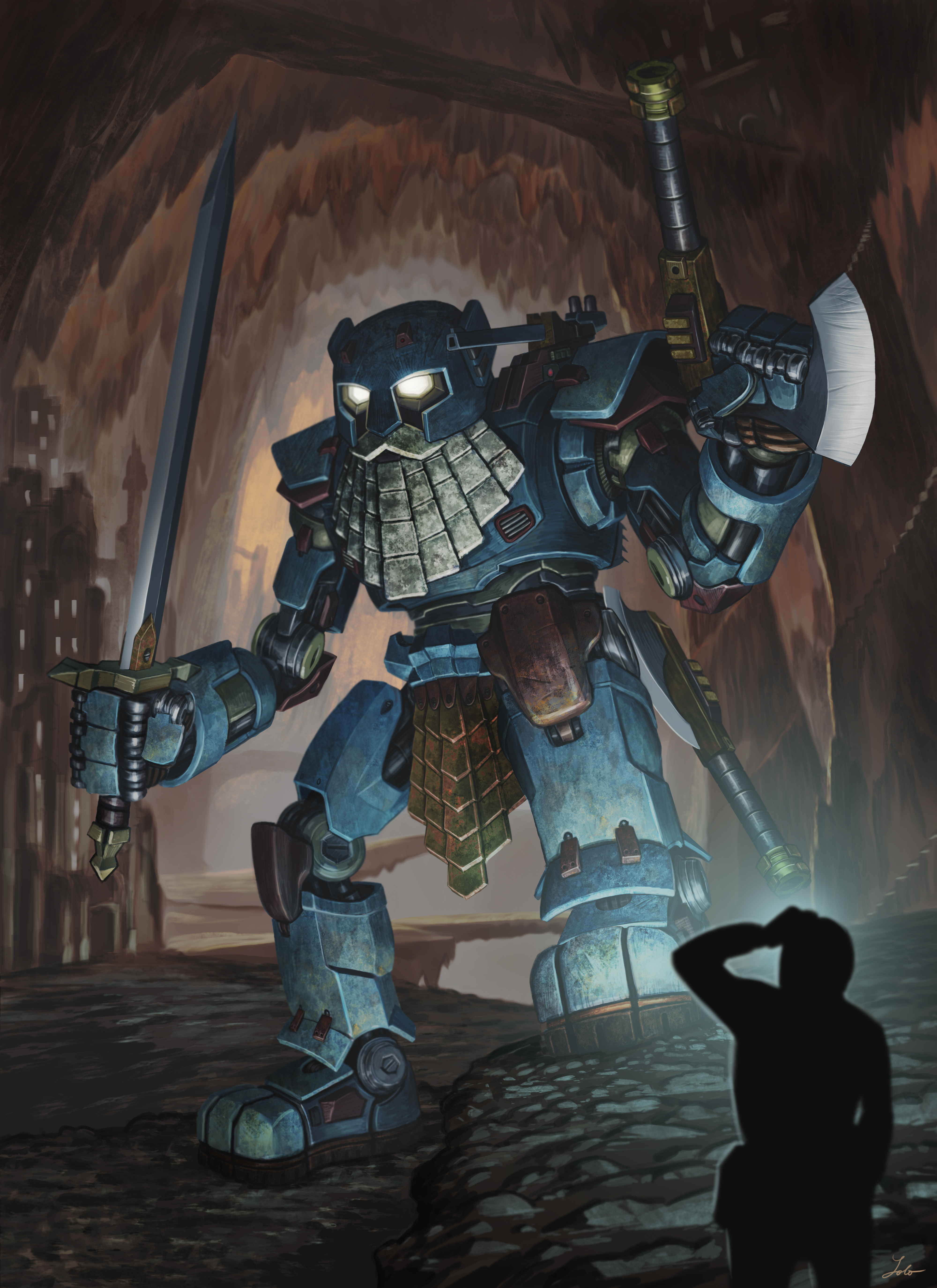The Ninavor followed by the Casmarians were brought into the worlds by Helvestus in the earliest ages of the mortal awakening. Helvestus in doing so chose Edden as their home, and gave on to them a bounty of lush livable lands. Dwarves are much larger than fairies but shorter than man, with greater constitutions, longer lives, and colder hearts than both elder races. Set with the duty of preserving the integrity of the cosmological design by their demiurge, Dwarves in their nature are a counter the potential destruction of the Avopouragains and Humans.
Appearance & Anatomy
Both the Ninavor and Casmarians have squared thick heads, with bright eyes, fleshy cheeks, and once mature males always keep a full faced beard. Their forms though shorter than man’s, are very dense. This is due to their cartilage reinforced muscles, bones, and guarded ligaments. Their bodies also exhibit considerable regeneration due to their bloods unique oxygen absorption and vascular system’s muscular reinforcement. Accounting for their long lives, greater stamina, and overall resilience compared to other mortals.
Ninavor: These small robust people have bright minds that practice patience and intense focus that create masterworks of craftsmanship and art. They also have a strong affinity for nature and enjoy the living world more often then the stoneworked tunnels and strongholds
- Height: (2′ – 3′)
- Weight: (60 – 100lbs)
- Skin Color(s): Pale pink to white.
- Hair Color(s): Blonde, brown, black, and auburn.
- Resilience: The durability of the dwarvish form and their endurance keeps their bodies resilient beyond the average mortal.

Casmarians: These are the larger and stronger races of dwarves, purposed to protect Edden itself as the warriors in defense of the ruling ninavor caste.
- Height: (4′ – 5′)
- Weight: (140 – 220lbs)
- Skin Color(s): Pale and tan shades of pink and brown.
- Hair Color(s): Blonde, brown, black, and auburn.
- Resilience: The durability of the dwarvish form and their endurance keeps their bodies resilient beyond the average mortal.

Periorgs: Casmars, Orgies, Ponponies, Gressases, and Keinber are just some of the sub-races of “halflings” which are the people of mixed dwarvish heritage (Ninavor with Casmarian). Orgies are the most unique in appearance among half-lings as they never really growing substantial facial hair. Sometimes being called the beardless, or even bearing “no-wiskers” as a disparaging nickname around their bearded cousins.
- Height: (2′ – 4′)
- Weight: (60 – 120lbs)
- Skin Color(s): Pale and tan shades of pink and brown.
- Hair Color(s): Blonde, brown, black, and auburn.
- Resilience: The durability of the dwarvish form and their endurance keeps their bodies resilient beyond the average mortal.

Abilities
Omnicognition:
Unlike the elder races(fairies&man) dwarves don’t have an innate magic to their biology. However their incredible cognitive functions have in certain eras allowed them the ability to design and sustain a mechanical infrastructure that gives them terribly powerful technology. To describe the dwarves’ mind it needs to be understood that while half-lings(periorgs) suffer from some memory loss, all most all dwarves can recall any day in their past or detail of a story told to them. That is to say they can at will meditate on a past memory so much they enter a dream state where they can relive the moment for the most accurate recall. This leaves them easily skilled in learning new languages, simulating engineering concepts, calculating complex factors, and producing imaginative art of surreal quality.

Culture & Behavior
Industrious, legacy driven, and judicially prudent are three factors of dwarven character that are seen as ideal in their society. Such idealized dwarves are often leaders or heroes that through their works found their own freeholds(fortified community) that eventually become new poleis(city-state). Guided by the ancient teachings of their archon guardians, dwarves are driven to preserve the natural world, and encouraged to innovate the world around them to better accomplish their goals of preservation. These two primary focuses within the foundations of dwarven philosophy and tradition can be best seen through the cultures of the two major races of dwarves.
The ninavor see their progress towards a greater future as a slow enjoyable development of their homes and community, which often includes the health of many protected lands and creatures. They too find the preservation of their society a paramount importance, but approach the deterrence of foreign threats none militaristically. Through an extensive network of reconnaissance teams the ninavor explore other realms, gather information about the powers in the cosmos, and determine what threat they might pose to Edden Prime. These ninavor as well as periorgs who leave their homes to explore the cosmos are called Gnomes, and though they are stealthy by trade many peoples recognize these short bearded explorers.

Casmarians from their beginnings had a desire to innovate, build, and design a fortified realm that kept their world a natural paradise. Engineers of the finest caliber their developments created the first grandpoleis and expanded dwarven influence through out the whole of the realm. They too were the first dwarven warriors who fought against vivaltren invaders from Sub Edden, and led the first conquest of that realm below them. Dawning the legendary golem suits(robotic mech suits) and constructing a vast network of underground freeholds and poleis the Casmarians occupied the home of the polymorphic giants as their preferred method of foreign deterrence. This militaristic mentality eventually resulted in their fall from prestige in Edden and leading ultimately to their banishment to the lower realms.
Living for several many centuries, each individual’s behavior is highly dependent on at what point they are in their stage of life. To start dwarven maturity is complicated as the difference between adulthood and fully mature are decades apart. Childhood for a dwarf usually lasts fifteen year, when at that point they’ll either enter an academy or a guild. Only when they’ve earned they’re first respectable title will they be considered and mature member of society.
This recognition comes sooner to members of noble or other accomplished families, but this usually takes a decade or more of study, practice, and experience in the art/trade. Some then spend decades exploring all the depths and details of their career field, or delve into new interests freely. This phase of the typical dwarven person can last centuries, and as long as the interest is there will keep them captivated towards goals and overall progress for much of their life. Perfecting their skills and knowledge to an expert level and beyond. From here in the twilight of a dwarves’ life begins a period of deep contemplation. When they think heavily on their legacy and work towards readying their usually extensive estate and menageries to their respective kin and companions. Some in their last years spend all day reminiscing in a meditative state, typically growing more reserved, even mute and unresponsive.
